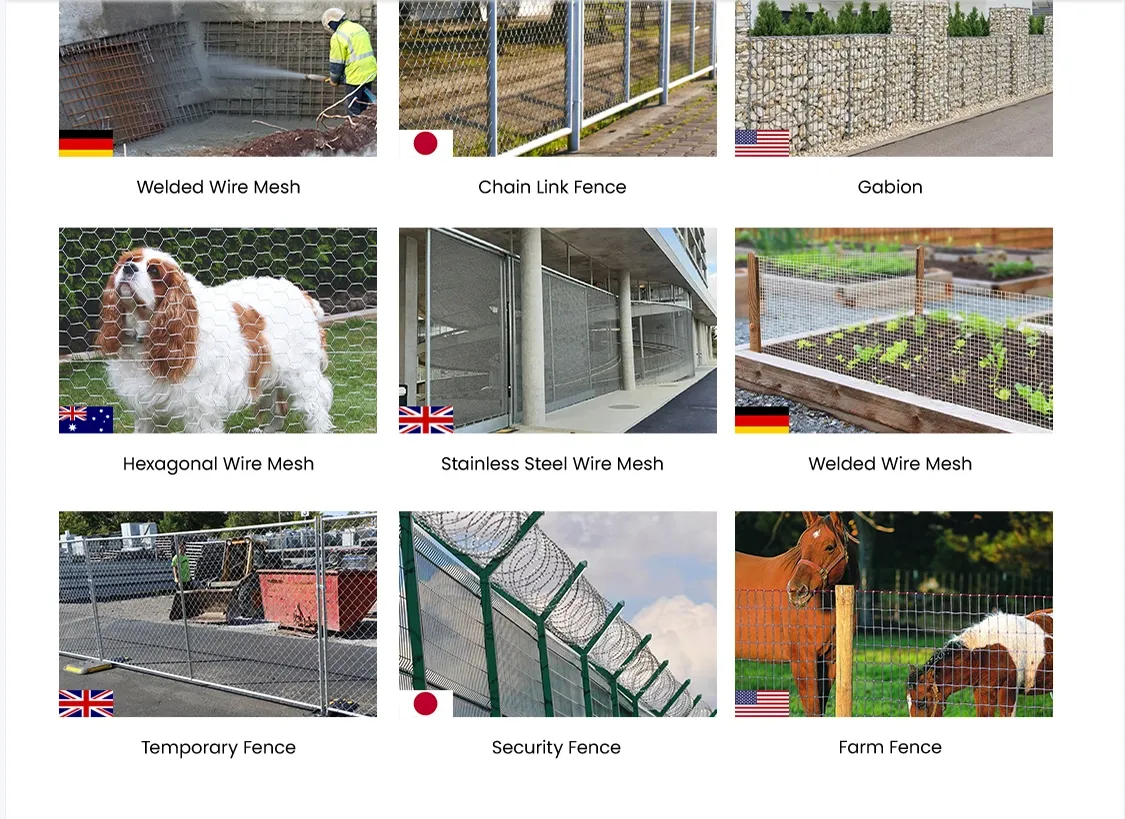The Importance of Climbing Plant Support Nets in Gardening and Agriculture
Climbing plants have garnered significant attention in gardens and agricultural practices for their unique abilities to enhance aesthetics, improve air circulation, and increase yields. However, one of the prevailing challenges faced by gardeners and farmers alike is how to effectively support these plants as they grow. Enter the climbing plant support net—a practical solution that not only encourages healthy growth but also adds an element of organization to any planting area.
Benefits of Climbing Plant Support Nets
1. Optimal Growth Conditions Climbing plant support nets provide an essential structure for vines and climbing plants, allowing them to grow in an upright manner. This arrangement maximizes light exposure to leaves and flowers, which is crucial for photosynthesis. Plants such as peas, beans, and tomatoes thrive when they can access sunlight from multiple angles, and the support net ensures that their climbing habits are not stunted.
2. Space Efficiency In an era of urban gardening and limited spaces, climbing plants offer a solution to utilize vertical space effectively. By supporting plants on a net, gardeners can grow more in less area. This vertical gardening technique can be particularly beneficial in small backyards, balconies, or community gardens where ground space is limited.
3. Improved Air Circulation Properly supported climbing plants have better air circulation around their leaves, reducing the risk of diseases such as powdery mildew and fungal infections. Good airflow helps maintain dry foliage, which is crucial for many climbing plants. The structured support keeps plants off the ground, minimizing contact with soil-borne pathogens.
4. Increased Yield For farmers, utilizing climbing plant support nets can lead to increased yields. As plants grow vertically, they can produce more fruit than those sprawling on the ground. For example, the use of support nets for cucumbers or squash allows these sprawling plants to bear fruit more efficiently by keeping them elevated, preventing rotting from soil contact.
5. Aesthetic Appeal Beyond the practical benefits, climbing plant support nets also contribute to the visual appeal of a garden. The intricate patterns formed by climbing plants can enhance a garden’s design, creating a beautiful tapestry of greens, flowers, and fruits. A well-trellised climbing plant can be a centerpiece in a garden, attracting attention and admiration.
Types of Climbing Plant Support Nets
There are various types of climbing plant support nets available, each designed for different needs and applications
- Trellis Nets These are more robust, often made from wooden or metal frames covered with netting
. They can support heavier plants like grapes and tomatoes and are ideal for permanent structures in a garden.climbing plant support net

- Soft Nets Made from softer materials like nylon or polypropylene, these nets are lightweight and ideal for delicate climbing plants like peas or pole beans. They are easy to handle and can be secured to existing structures such as fences or walls.
- Caged Supports These are circular or square cages that provide structure to plants like tomatoes. While not nets in the traditional sense, they work on a similar principle by allowing plants to grow upwards while providing stability.
How to Set Up Climbing Plant Support Nets
Setting up a climbing plant support net is a straightforward process, yet requires a bit of planning
1. Choose the Right Location Select a spot in the garden that receives adequate sunlight and has good drainage.
2. Install the Base Structure Depending on the type of net, this could be stakes, wooden frames, or existing fences. Ensure that they are secure enough to bear the weight of the plants as they grow.
3. Attach the Netting Use ties, hooks, or staples to secure the net to the base structure, allowing enough slack for plants to weave through.
4. Plant Carefully When planting your climbing plants, be sure to space them adequately so they can reach the net without overcrowding one another.
5. Train the Plants As the plants grow, gently guide their tendrils onto the net. With regular care and training, they will begin to climb naturally.
Conclusion
The use of climbing plant support nets is an indispensable technique in both gardening and agriculture. By providing the necessary structure for climbing plants, these nets not only enhance growth and yield but also improve the overall aesthetics of the gardening space. As more people embrace gardening, especially in urban settings, the importance of climbing plant support nets will only continue to grow, shaping the way we cultivate and enjoy our green spaces.
-
The Strength and Versatility of Aluminum Expanded Metal Mesh
NewsJun.10,2025
-
Safety Guards and Machine Enclosures Using Expanded Mesh
NewsJun.10,2025
-
Performance with Round Hole Perforated Mesh in Wall Panels
NewsJun.10,2025
-
How Steel Grating Trench Covers Distribute Weight Efficiently
NewsJun.10,2025
-
How Deck Mesh Railing Enhances Backyard Aesthetics
NewsJun.10,2025
-
Comparing Bar Thickness and Spacing in Steel Grating
NewsJun.10,2025
Subscribe now!
Stay up to date with the latest on Fry Steeland industry news.

